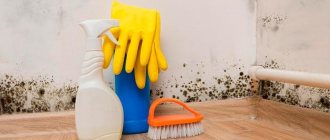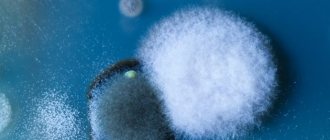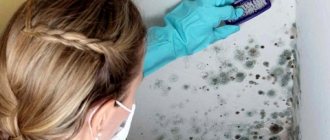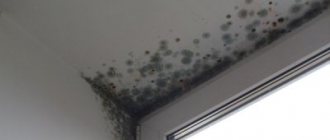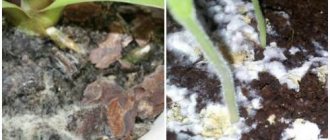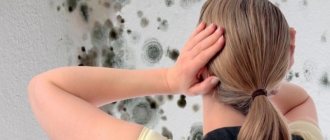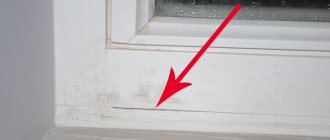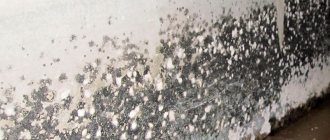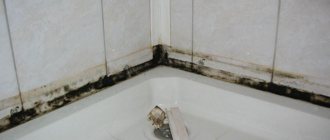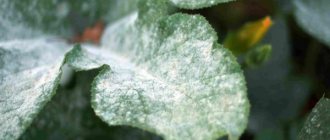Health
Most often, when we see mold on food, we simply throw away the spoiled product. However, some household mold can be much more dangerous.
Some types of mold produce a substance known as mycotoxin
, which can cause breathing problems, headaches, and even permanent neurological damage. Milder symptoms may include a runny nose, sneezing, or a foul odor.
So-called black mold
refers to several types of mold that are dark green or black in color. This type of mold grows in warm, moist environments, including bathtubs, showers, closets, kitchens and basements.
Groups of microorganisms in mold
Microorganisms in mold are divided into the following groups?
- The first group includes mold fungi. They affect building materials (concrete, stone) and surfaces treated with paint, plaster, and wallpaper. They come in a variety of colors, including black. They are clearly visible in contaminated areas, including on the walls of homes. At first they are located pointwise, and then form spots of points, gradually increasing in size. Some fungi from this group are able to glow in the dark.
- The second group consists of blue fungi. They have a detrimental effect on tree species, especially pine. Owners of wooden buildings should be attentive to this type of mold, protecting their buildings with preventive treatments.
- The third group is represented by putrefactive fungi. This is a brown microorganism that destroys all wood, without exception. Putrefactive changes appear as black (or other colored) stripes on wooden surfaces.
It belongs to the first group of microorganisms and has a detrimental effect on the human body. It is especially dangerous for older and younger age groups, people with weak immune systems and expectant mothers.
Types of mold in the house
Depending on the subject of exposure, there are three main types of mold.
Among them, mold fungi occupy the first place. Such a microorganism can be seen on concrete structures, stone or paint. Mold can destroy building materials down to the very foundation. Therefore, the question arises: “Mold in the house, why is it dangerous?” At least a new renovation. And this is an expensive activity. Blue fungi spread preferentially on wooden surfaces. You can notice the microorganism by its characteristic gray-blue color. Mold is dangerous because it completely renders a wooden structure unusable. For preventative purposes, the wood is coated with a special anti-plaque agent.
Order a free consultation with an ecologist
Leave your phone number and our specialists will advise you on laboratory air testing
The harmful effects of mold on the human body
All organisms on the planet have their purpose and, despite the importance of the presence of black mold in the ecosystem, its presence in human life leads to harmful effects on the body; toxins released by microorganisms poison the respiratory tract and organs. Black mold feeds on dead organic matter and reproduces rapidly through spores. The rate of its growth cannot be controlled.
The health effects from airborne and direct contact are equally dangerous. If you don’t put all your efforts into destroying it, the consequences of fungal damage to walls for residents can be:
- allergy;
- asthma;
- dermatitis;
- rhinitis;
- bronchitis.
- conjunctivitis.
Black fungi can cause tuberculosis, suffocation and many other problems. To protect yourself from their effects, you must initially not neglect prevention, not giving microorganisms a single chance to settle in the house.
Mold prevention
Fighting mold is not an easy job, so it is better to completely prevent mold from appearing in your home. As part of prevention, always follow these rules:
- ventilate rooms as often as possible, paying special attention to the kitchen and bathroom;
- do not dry washed clothes in the bathroom;
- promptly repair all plumbing breakdowns, monitor the serviceability of the water supply and sewerage systems;
- install a ventilation system;
- heat the house or apartment so that the walls do not become overcooled;
- leave bathroom doors open;
- When arranging furniture, leave gaps between it and the walls;
- Wipe down surfaces that may be most susceptible to mold on a monthly basis;
- When carrying out renovation work in the house, be sure to use moisture-resistant materials and antiseptics.
If you like to grow indoor flowers, try to avoid violets and geraniums. It is these plants that are an excellent place for fungus to multiply. On leaves and flowers this may be completely unnoticeable, but on the soil in which these flowers are planted you will very quickly see white mold. Believe me, it will not stay in the pot for long, but will very quickly begin to conquer new spaces.
Such a beautiful and easy-to-care geranium can become a source of mold in your home.
Symptoms of diseases of the human body
The problems arising from fungal exposure are many and varied; The initial symptomatology of a toxic disease is considered to be an allergy to mold in the form of a reaction of the human body to cold or dust. It is necessary to carefully assess the quantity and quality of symptoms and take appropriate measures to eliminate the microorganism, without ignoring them.
Other signs of the consequences of contact are: lack of air, difficulty breathing, sore throat. Frequent headaches, runny nose and weakness should alert you. Allergic reactions are possible in the form of rashes on the skin, itching and swelling. Asthmatics may experience worsening of the disease
As a result of damage by mold formations, diarrhea occurs and the immune system weakens. Why is black mold dangerous for humans? The fact that after the initial symptoms, in the absence of measures taken to eliminate it, serious problems begin, sometimes leading to cancer and death.
Molds in the apartment and a child, what could be the consequences?
Why is mold in an apartment dangerous for children?
The fact is that the child’s body is very sensitive and needs careful protection from negative factors. It is children who are primarily susceptible to diseases, including respiratory and respiratory diseases. As a child grows up, immunity develops, especially if measures are taken to strengthen it. With the growth of mold in the apartment, there is a danger for children. There may be symptoms of allergic reactions, including choking. The child is very susceptible to the smell of fungus and may be the first to suffer from its presence.
Why is mold dangerous for a child? First of all, allergies, which in the future can develop into asthma.
The first symptoms of the presence of an allergen:
- sneezing;
- runny nose;
- itching;
- swelling;
- skin rashes.
If such symptoms appear, you should consult a doctor. It is imperative to neutralize the effect of the allergen on the child.
How to protect the human body from mold?
To protect the human body from mold, regularly conduct a thorough inspection of the premises to identify mold stains. If there is a hint of their appearance, immediately take action. Many recipes from available household substances are offered on websites to combat fungus.
The most common types of diseases acquired as a result of systematic exposure to mold-infected premises: Frequent influenza infections, bronchitis, asthma, pulmonary tuberculosis, allergies - are provoked by fungal and mold spores, which, when entering the human body, suppress his immunity, destroy beneficial microflora and actively reproduce in a favorable environment. Rheumatism is a disease that occurs as a result of constant contact with damp clothing, bed linen, upholstered furniture and other objects that are located indoors. The risk of exacerbations of these diseases especially increases in autumn, winter and spring.
Mold appears in the rooms, paint begins to peel off on the walls, plaster falls off, and traces of salt appear.
Human habitat without fungus
In St. Petersburg and the Leningrad region, a significant part of the residential and industrial environment is contaminated with fungus; mainly the premises of the first floors and basements, as well as the upper floors under the roof, are contaminated with this biological organism. Indoors, utility rooms and common areas are primarily contaminated: toilets, bathrooms, kitchens, dining rooms. It is not uncommon for fungus to appear in living rooms if there is high humidity due to poor heating, frozen walls, etc.
Infection with fungus occurs precisely due to high humidity when waterproofing is damaged, walls freeze, followed by condensation of water vapor. In addition, ineffective ventilation, penetration of polluted atmosphere into premises, and poor hygiene contribute to fungal infection.
In addition to the actual structures of the house, the fungus does not spare building materials, especially wooden ones. By releasing a special enzyme, the fungus converts cellulose into a soluble substance - glucose, and glucose oxidizes atmospheric oxygen into carbon dioxide and water, which leads to the destruction of the material. Infected wood is destroyed in 1-1.5 years.
It is noteworthy that the fungus concentrates first on the surface of the substrate (brick, stone, plaster), and then penetrates deep into it and destroys the material from the inside. Water, having low viscosity and the ability to dissolve various substances, performs transport functions and ensures the flow of nutrients into organisms and the removal of waste products from them. Waste products are mainly mineral or organic acids (sulfuric, acetic, citric, propionic, grape, etc.) - these compounds actively interact with the components of building materials.
The appearance of the fungus worsens the appearance of the structural elements of the room, cracks appear in the brickwork, reinforced concrete, and the plaster crumbles.
Even polymer products are not spared by the fungus, changing their shine; the fungus has also been found on storage media in computers.
Medical research on fungus
During a medical study of residential and industrial facilities, it was revealed that contaminated materials always contain fungi such as Aspergillis niger, Aspergllus fum, as well as Penicilium, Cladosporium, Scopulams, and less often Candida. In addition to the destructive effect of fungal spores in the air, they sharply worsen the sanitary and hygienic conditions of human stay in premises, which is still practically not taken into account by anyone, and the consequences are not assessed.
Mold is a microscopic numerous fungi that form a coating on the surface of an organic body, which causes spoilage of the product. Mold growth occurs immediately after the death of a plant or animal organism, first forming mold and then accumulations of bacteria. Molds begin to germinate and rapidly multiply, as a rule, where there are favorable conditions for this. On one moldy loaf of bread, for example, under a microscope you can detect billions of fungal spores, which are increasing in number every minute.
For mold to appear, favorable conditions are needed, such as high air humidity, a fairly high temperature, up to 30 degrees, and failure to maintain basic cleanliness. The influence of mold on the human body is quite great, since it is capable of spreading its microscopic spores through the air. For mold growth, room temperature, ineffective room ventilation and high humidity conditions are sufficient. Mold can attack surfaces such as concrete, wood, plaster, rubber, plastic and many others.
Noble mold infection
Noble mold often affects fruits and berries, which quickly become unusable because of it. However, in many countries such as Hungary, Germany and France, the most famous and delicious wines are produced thanks to this fungus.
Uses of blue mold
Blue mold has been known to the world for quite a long time, as it is an indispensable component of the use of marbled cheeses such as Stilton, Roquefort and Gorgonzola.
Uses of white mold
White mold is also added to cheese to add a new and unique flavor profile; used to produce famous cheeses such as Brie and Camembert. However, it should be remembered that only high-quality blue cheese has a positive effect on the human body, as it consists of a large number of microelements. But even such high-quality products are not recommended for use by children and pregnant women.
How to deal with mold and mildew in the bathroom and in the house: a list of mold and mildew remedies
This product can be industrial or homemade. To combat fungus, store-bought products in the form of creams, gels or powders that contain chlorine or alkalis are suitable. For example:
- plain white
- Domestos
- HG
- Anti-Fungus
- IZOcide
- Titan
- other
An example of an industrial antifungal agent.
IMPORTANT: Before using any commercial or folk remedy on a certain type of surface, you need to test it on a small, invisible area to see how aggressive it is
The effects of mold on the human body
Exposure to mold is harmful to the human body because it produces and contains toxic compounds that are hazardous to health. A person can inhale mold spores with air, and they will settle in the lungs. Also, fungal spores easily get into food and are absorbed through the skin, which is why nails are checked in swimming pools for the presence of mold under them.
Sometimes after brushing your teeth, a specific taste appears in your mouth, this indicates that fungus has appeared on the toothbrush and it should be replaced immediately. Mold causes allergic reactions in children, since the children's immune system is not yet strong enough. Since everyone's susceptibility to mold fungi is different, the consequences of infection can also vary significantly. Elderly people and patients who have undergone chemotherapy and are taking antibiotics are especially susceptible to severe illness due to exposure to mold.
Diseases resulting from mold exposure:
- Pneumonia;
- Sinusitis;
- Skin rashes;
- Dry cough;
- Stomach upset;
- Nosebleeds;
- Headache.
The cause of these diseases is sometimes very difficult to diagnose and difficult to cure. Many types of mold that surround us have pathogenic forms, long-term exposure to which can cause internal bleeding, liver and kidney damage, as well as pulmonary emphysema. Severe mold poisoning of a person leads to the development of mycosis, which is diagnosed in various laboratories and allergy centers using test tests.
What to do if mold appears on food
As a rule, mold can appear suddenly and anywhere; it can especially often be found in your own refrigerator on food. Most often, mold appears on baked goods, and upon discovering such a surprise, many simply cut off the mold-affected area, mistakenly considering the rest of the bread to be edible. Basically, no one even thinks about how safe such actions can be for the health of the whole family. So what should you do with moldy bread?
Modern scientific research has shown that dairy products and flour products affected by mold should definitely be thrown away entirely, since they have a porous structure through which mold spreads calmly and unhindered, penetrating the entire depth of the product. However, this does not apply to hard cheese; the mold that has formed on it can be carefully cut off with a knife, and the remaining part can be used to prepare dishes such as pizza.
Quite often, mold appears on jam, which is a pity to throw away. It is a mistake to believe that such formations can somehow resemble penicillin. This is not true, because noble mold, which is used to make healthy products, is grown in special conditions and undergoes the necessary preparation, and the mold that affects our products in the refrigerator contains a great variety of toxic substances that negatively affect the human body.
First aid for mold poisoning
If mold does enter the body, it is recommended that in case of poisoning, immediately consume activated carbon, 1 tablet per 10 kg of body weight. With any, even the most minor poisoning, the liver is primarily affected, so you should take this problem seriously. If a sufficiently large amount of moldy product is eaten, it is advisable to rinse the stomach with a weak solution of potassium permanganate or use a medication that has a restorative effect. The best option in case of mold poisoning is to contact a doctor in a timely manner, who will help you correctly carry out the procedure for removing toxins from the body.
I was faced with a problem that was not very serious at first glance, suspicious dark spots on the walls. But if you look deeper, such stains that occur in basements, bathrooms or living rooms can lead to significant problems in the future. These are mold fungi, a sign of high humidity and poor ventilation in the room. Mold is a colony of a single-celled fungus that develops from spores that are constantly present in the air in a “preserved” state in huge quantities. The spores “wake up” for intensive reproduction as soon as favorable conditions appear for this: increased humidity and warmth.
Causes of fungi (mold)
The main reason for the appearance of mold is the ideal conditions for the appearance and spread of such fungi: temperature +20°C (some varieties can grow at zero temperature or even below zero) and relative humidity above 95%. In general, there are not so few opportunities for creating living conditions for harmful fungi. This is, first of all, capillary suction of moisture along the walls of moistened foundations. This is especially common in old buildings due to the lack of waterproofing.
In modern houses, the most common cause of mold is the increased thermal conductivity of the corners and additional heat losses in the end rooms compared to ordinary rooms located inside the building, due to the increased area of the external walls facing the street. It is also necessary to say about one more circumstance specific to our country - the very early shutdown of heating in the spring and the delay in turning it on in the fall. This also creates favorable conditions for the development of fungus. And of course, the massive introduction of plastic window technology, insulating from noise and retaining heat, disrupts the processes of natural ventilation of rooms and contributes to the formation of high humidity.
Normal for a comfortable human existence is humidity in the range of 70% - 80%. If a space at home or a room has a high level of humidity (house plants, animals, frequent laundry in the presence of small children, cool rooms with high humidity outside, uneven heating of rooms, poor ventilation, etc.) moisture condenses in suitable places. Such places are future sources of the appearance and rapid proliferation of mold fungi.
Toxins
Mycotoxins have systemic effects (headache, fatigue, etc.) and local (irritation of the eyes, skin, lining of the nose and bronchi). Their local actions also disrupt the barrier functions of damaged body tissues, which increases the penetration of allergens and infections, leading to more frequent illnesses from both allergic and infectious and even malignant diseases.
In extreme cases, high concentrations of mycotoxins in the air can cause a serious toxic reaction. Contact with materials containing mycotoxins may cause skin rashes.
Symptoms such as eye, nose and upper respiratory tract irritation, fatigue, cough and chest tightness are often related to the presence of glucan (a bioactive carbohydrate in the cell wall of mold) in the air.
A number of forms release mycotoxins (fungal toxins). These are:
- Aspergillus versicolor - can be found in house dust on the floor;
- Chaetomium globosum - mainly found on wood and cellulosic materials;
- Stachybotrys chartarum - Found primarily in damp drywall.
Harmful of mold to human health.
Let us note: mold is dangerous not only and not so much for the building structure, but also harmful to human health. Once in the respiratory and circulatory system, spores can cause a number of diseases. In addition, when mold multiplies, it releases volatile organic compounds, which are responsible for a specific odor and are very harmful to health. The consequences may vary. First of all, these are difficult to diagnose and treatable allergic diseases of the skin (dermatoses, mycoses) and respiratory tract (runny nose, cough, even bronchial asthma). As well as diseases of the musculoskeletal system or joint-rheumatic, headaches of unknown origin, nausea, dizziness and even exhaustion. Children, elderly people and people with weakened immune systems are especially susceptible to this scourge.
Mold
Mold consists of a diverse group of fungi. They are not classified as plants or animals. Mold spreads by releasing millions of spores into the air. These disputes are found almost everywhere. Under suitable conditions, they develop and form mycelium (which we understand as mold). Small fragments of mycelium can be released into the air and create new colonies.
Mold secretes various enzymes that can damage the materials on which it grows and releases a number of biologically active substances such as mycotoxins (fungal toxins). There are different types of mold, and the color of each is determined by both its appearance and the material on which it grows. Color does not provide information about how dangerous it is to human health. Enzymes and mycotoxins are not associated with allergies, but the latter cause additional harm to people.
How to protect yourself from mold “attack”?
To protect yourself from an “attack” of mold, you first need to establish the cause of the “headache” in specific places and consider measures to eliminate high humidity. At the same time, you need to know that heating and ventilation must function at the level of design standards, the walls of the premises must have thermal resistance strictly in accordance with the design, and heating devices must be correctly placed in the end rooms. Treat any small stains found with hydrogen peroxide or table vinegar as a first emergency measure.
Install only “hinged” plastic windows and ventilate the premises by opening the windows completely, try to install ventilated facades in the premises.
Do not close bathroom doors tightly, leaving room for temperature and humidity to equalize.
Treat contaminated surfaces with a special agent, if necessary, then to the level of the concrete (brick) surface.
Folk remedies that help in the fight against mold:
- The surface is treated with creosote;
- A solution containing 1-1.5 kg of sodium fluoride, or 1 kg of copper sulfate, or 1.5 kg of iron sulfate in 10 liters of water. You can add both iron and copper sulfate (0.5 kg each) to the solution at the same time;
- A solution containing 0.5 kg of copper sulfate and 1.5-2 liters of acetic acid in 10 liters of water;
- A solution containing 0.9 kg of borax, 0.4 kg of boric acid and 1.4 liters of table vinegar in 10 liters of water.
The prepared solution is heated to 50-70°C and sprayed or applied with a brush to those areas that are affected by the fungus. The wood is allowed to dry, and after a month the treatment is repeated; Anthracene oil penetrates deeply into the pores of the wood and completely destroys the fungus, however, after such treatment, the wood is well colored only after a few years. It is recommended to treat other affected building materials with copper sulfate, office glue or urea. However, folk remedies only temporarily stop mold growth.
As a result of exposure to constant moisture and heat, fungus may appear on the walls and ceiling. Of course, black mold is harmful to health, but not everyone thinks about it.
When arranging the interior of an apartment or private house, residents try to give it originality, but forget about serious problems. Thus, black mold not only spoils the appearance of the room, but also negatively affects the well-being of household members. We will discuss further why mold is dangerous for humans and what pathologies it causes.
Excessive indoor humidity
In addition to allergens, there are other important factors that can contribute to hypersensitivity or exacerbate allergy symptoms in sensitive children and adults. Humidity in a building is a risk factor for technical and health problems.
The source of unwanted moisture in a building can be external - the result of water penetrating into its structure through casings or the internal surface - the occurrence of condensation due to high humidity in the premises, low wall temperatures and insufficient ventilation.
Water from the soil can penetrate into the foundation of a building. This usually applies to older buildings. This may be due to, for example, a sewer obstruction or improper insulation of the building foundation. Water penetration through the roof, walls, doors or windows as a result of poor building maintenance or building faults is also a possible cause of indoor moisture. Flooding caused by corrosion of water or sewer pipes or loose pipe joints, as well as condensation on cold surfaces (exterior walls, corners, windows) are also common causes of unwanted moisture.
Signs of moisture in your home
Condensation is a problem with high indoor humidity, releasing more water into the air than ventilation does. This occurs during bathing, cooking, cleaning, washing and drying clothes. Without proper ventilation and air heating, unwanted indoor humidity cannot be removed. The main signals for this are:
- condensation (more than 5 cm) on the inner surface of the window glass;
- visible shape and wet spots on the floor, walls, ceiling.
Condensation on the inside surface of window glass (more than 5 cm) is more common in households with electric heating - 35.9% versus 27.9% for centrally heated homes and those relying only on natural ventilation - 30. 3% versus 26.3% for kitchens with hoods in addition to natural ventilation.
How does mold spread?
Mold in an apartment is a special type of fungus that spreads through spores. This type of fungus can attack the walls of buildings with increased dampness. The largest amount of black mold can be seen on slopes near windows, since condensation most often accumulates there.
There are several types of fungus that negatively affect the human body:
- Aspergillus is a microorganism that spreads during repair work on building materials.
- Penicillus is a fungus that spreads on damp materials in the form of blue or green spots.
- Cladosporium is a microorganism that lives on fabrics and wood surfaces.
- Alternaria is a fungus that grows in moist environments in kitchens and bathrooms.
Fungal spores are invisible to the human eye and can only be detected under a microscope. They enter the room with clothing, pets, or during normal ventilation. It is almost impossible to completely protect yourself and your loved ones from mold.
However, the fungus affects the ceiling and walls if conditions are favorable for this. The optimal humidity level in a living space is considered to be 80%, and it is better not to exceed it. An increase in this indicator is the main factor influencing the development of the fungus. The moisture concentration in the room increases as a result of:
- lack of normal ventilation in an apartment or house;
- high room temperature in frosty weather, which leads to the formation of condensation;
- uneven heating of the living space;
- abundance of indoor flowers in the apartment;
- drying wet clothes in the bathroom.
Most often, fungus appears on apartment walls, ceilings, under window sills, behind cabinets, in the kitchen and bath, that is, places where moisture accumulates. Having noticed mold on your walls or in other places, you need to urgently deal with it before it causes serious harm to your household.
Why is mold on the walls in an apartment dangerous?
Everyone should understand that damage to an apartment is a serious reason to think about repairs. So, if spores have infected painted surfaces, it is often enough to wash them thoroughly with special solutions and treat them with special compounds.
If we are talking about a loose plastered wall, the situation here is a little more complicated: spores may remain in the pores.
The worst thing is when blackness affects walls covered with wallpaper. There is nothing you can do to help here - all that remains is to tear off the wallpaper, putty, prime the walls and re-glue everything again.
Mold on walls is also harmful because it can easily spread to pieces of furniture. It is especially bad when it affects wooden parts, significantly spoiling their appearance. It is now clear why the fungus is dangerous; more often its appearance is the result of insufficient sunlight and dampness, therefore it is recommended to ventilate poorly lit bedrooms more often and, if possible, heat them.
Why is mold dangerous to the human body?
It is impossible to immediately sense the danger of mold, which is why it is called a “time bomb” for the human body. Initially, it does not affect human health, but with prolonged contact it causes serious illness. The harm to human health has been proven by numerous medical studies.
The effect of black mold in an apartment or private house occurs as follows:
- Toxic intoxication, which occurs as a result of fungus entering the digestive tract, which is accompanied by extremely unpleasant sensations (abdominal pain, diarrhea, nausea, vomiting or constipation).
- An allergic reaction is a process that occurs due to mold entering the mucous membrane of the nose, eyes or mouth. The cause of such reactions can be both dead and active fungi.
- Direct infection is very rare and occurs mainly in immunocompromised people.
As a rule, long-term presence of fungus on the ceiling and walls in an apartment leads to the development of serious pathologies:
- Mycoses and dermatoses are diseases of the skin that arise as a result of the settling of mold spores.
- Joint and rheumatic diseases in combination provoke a deterioration in general health, the development of headaches, drowsiness and weakness.
- Chronic diseases associated with irritation of the mucous membrane. This may be a chronic runny nose, inflammation of the mucous membranes of the eyes, or the development of a dry cough.
- Diseases that occur in the upper and lower respiratory tract, for example, bronchitis, pneumonia.
- Activation of cancer cells during prolonged contact of the fungus with the human body. As a result, malignant neoplasms may appear.
American scientists agree that fungal spores have a detrimental effect on children's bodies, causing exacerbation of asthma. In addition, they are a factor influencing the development of diseases of the cardiovascular system.
In order not to harm your health, it is necessary to properly and promptly combat black mold indoors, which we will discuss later.
Types of fungi
Today, more than 100 thousand species of molds are known, but scientists believe that their real number is much higher. There are dangerous species, and there are also those that have virtually no effect on human health. The most common are:
- black mold;
- green;
- white.
It is difficult to say which mold is the most dangerous, since all varieties have differences in the rate of reproduction, characteristics of vital activity and methods of impact on various materials, plants and humans.
Harmfulness of black mold
Black mold is considered the most dangerous variety. Its appearance is provoked by high humidity, lack of sufficient air circulation, and heat. The spores land on the skin, penetrate the respiratory tract, and the digestive system. If you live in an apartment with mold, then over time you are likely to expect problems with the respiratory system, allergies, skin diseases, and possibly more serious pathologies.
Mold on walls is dangerous not only due to its negative impact on the health of people and pets. Long-term exposure to fungus leads to the fact that some materials become unsuitable for restoration and products or structures made from them have to be replaced. This primarily applies to drywall, some types of plastic, and wood.
Another dangerous thing about black mold is that it multiplies quickly, penetrates into materials and becomes more and more difficult to get rid of it every day. Even if visible spots are removed, the spores remain and continue to develop, leading to the appearance of black spots in the same and new places.
Green mold
Another dangerous type of mold in the house is green mold. Outwardly, it looks a little like moss. The reasons for its occurrence are the same as in the case of black mold - dampness, temperature changes, and insufficient ventilation. The harm of green mold that appears in an apartment is a negative impact on people and damage to property.
Green spots often appear on the soil in flower pots, as well as on food.
Attention! If you notice a small green area, for example, on bread, you should not try to save the product by cutting out the damaged piece. The spores have already penetrated deeper, so you need to throw away the entire affected loaf.
White mold
White mold looks like fluff. Most often, this species infects plants, soil, and some food products. White mold is less dangerous than black and green mold, but can still cause harm to health - primarily by triggering the development of allergies.
Green
This type of fungus is used in the production of such products as:
- cheeses;
- dry-cured sausages.
But this is done under special conditions in accordance with regulations and does not mean at all that you can eat ordinary foods contaminated with white mold.
Prevention of black mold development
To protect your home from the development of black mold and prevent the occurrence of serious diseases, you need to know a few simple rules of prevention:
- The room must be ventilated daily at least twice a day. Ventilation should be short but intense, that is, it is advisable to open windows and doors to the maximum. It is necessary to ensure that fresh air reaches the places most favorable for fungus - the bathroom, kitchen, attic and basement.
- You should not stay in poorly ventilated areas for a long time.
- The bathroom needs regular cleaning: washcloths must be dried, bathroom curtains must be constantly straightened and wiped.
- You should carefully monitor the serviceability of all plumbing fixtures, because constant leaks will also contribute to the spread of fungus.
- Linen should be hung out immediately after washing.
- When using a vacuum cleaner, you must open windows and doors wide. Ventilation will help level it out.
- When replacing a garbage bag, you need to wash and dry the bin.
- It is necessary to use an air conditioner to create a normal microclimate in the room.
Black mold in the house causes many diseases - from simple malaise to cancer pathologies. Therefore, when black, green or blue spots appear on the ceiling, walls or furniture, it is necessary to immediately deal with this problem. Today there are many special products that help get rid of fungus. And compliance with preventive measures will prevent its development.
Methods for combating mold in an apartment
It is necessary to immediately understand the fact that it will not be possible to completely get rid of the pest.
It is important to follow precautions to prevent the fungus from growing. But, if this guest appears in your apartment, immediately start a war with him. If you find mold-infested areas, you need to moisten them generously with water. This procedure is done to prevent spores from becoming airborne. Next, special means are used that help neutralize the actions of the harmful microorganism. A surface infected with fungus must be treated with a special antifungal solution. It is better to treat the area several times after the previous one has dried.
You should pay attention to the manufacturer's label and follow all recommendations. It is better to carry out such work using protective equipment. Such a solution should not come into contact with the skin, much less the human mucous membranes.
Using a wire brush, thoroughly clean the infected area. After scraping all the mold down to the base, it is better to remove more paint or whitewash than to undergo this procedure again. It is advisable to burn the removed mold. A special agent is applied to the cleaned area to block re-infection.
It is better to get rid of infected pieces of furniture, since it is often impossible to destroy mold. This is especially true for upholstered furniture and clothing.
